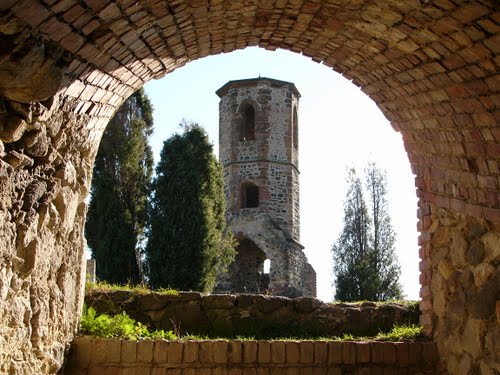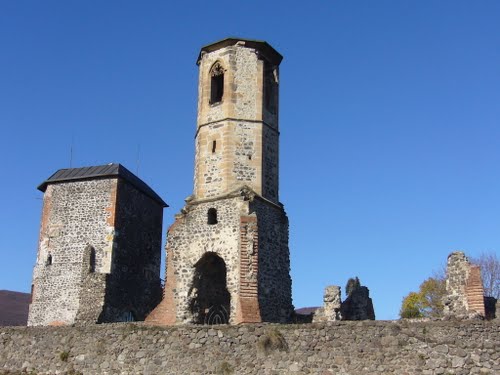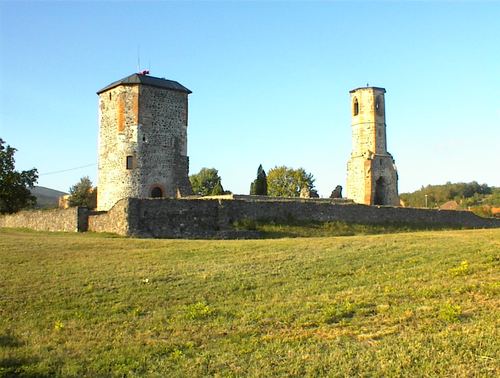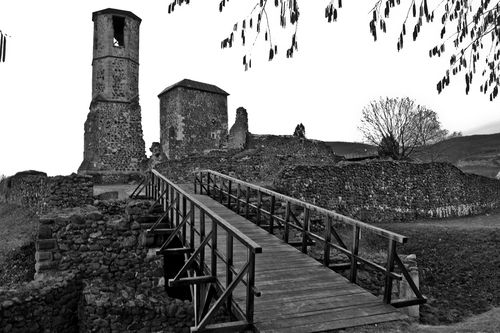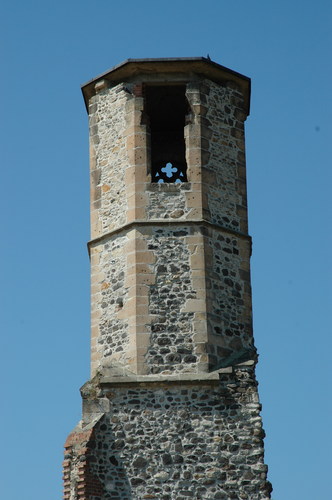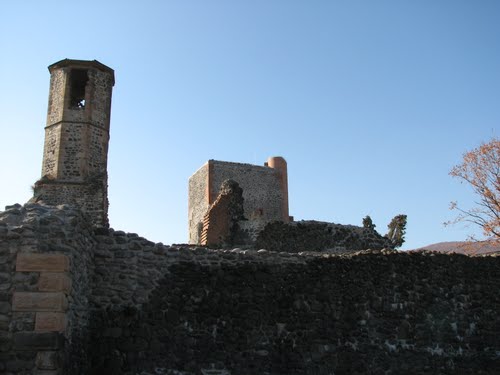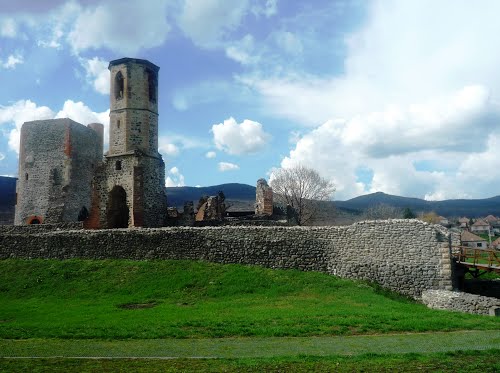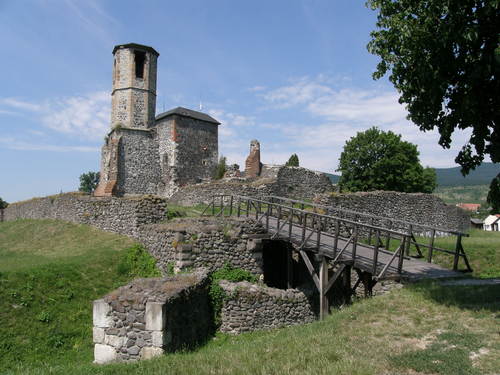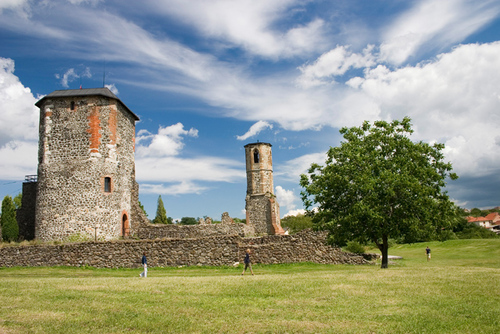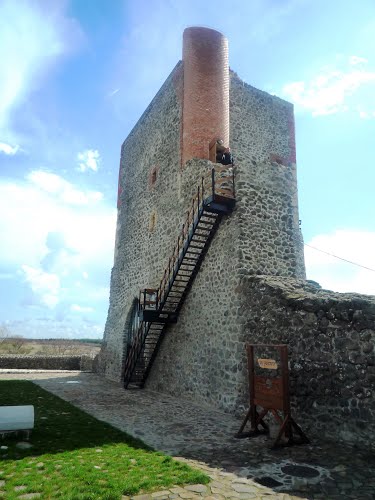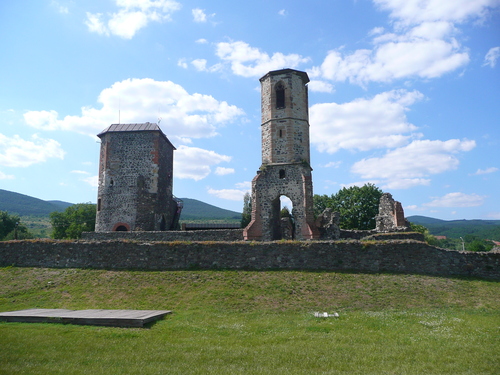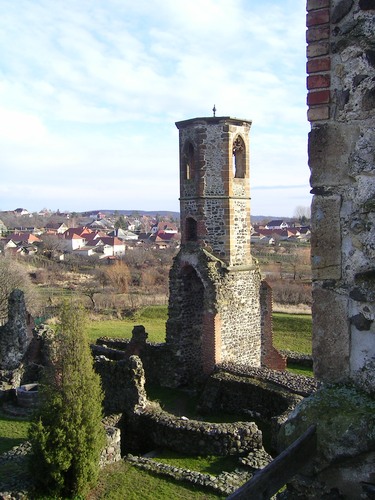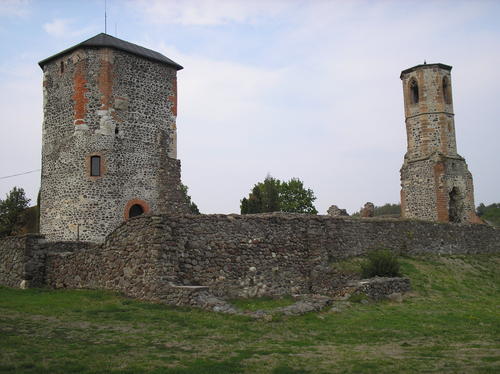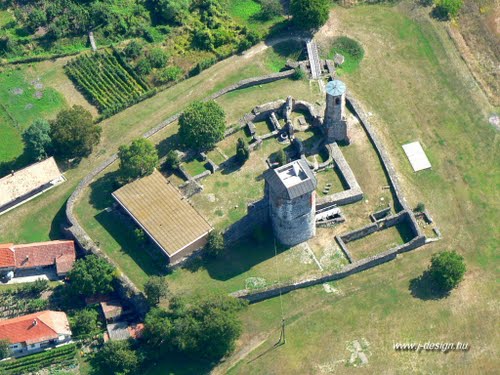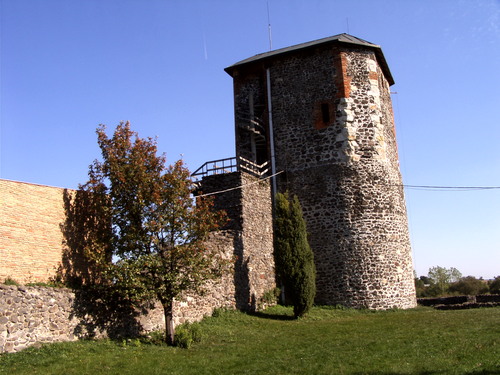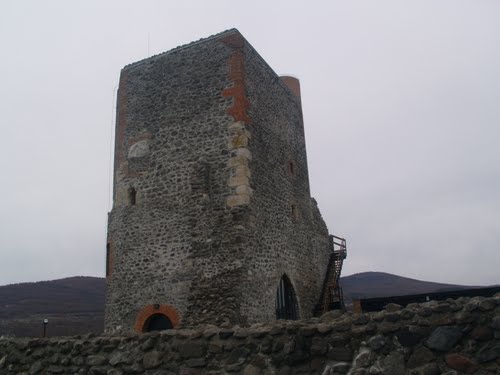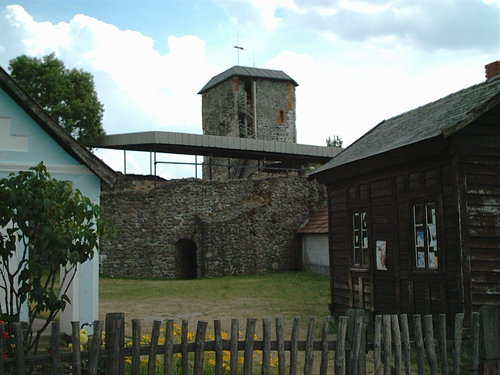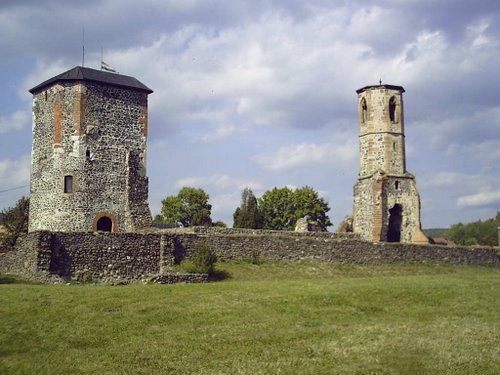The Castle of Kisnana is one of the most beautiful remains of late-Medieval noble residences in Hungary. Its history well demonstrates the evolution and transformation of landlord residences. Like the other settlements in the Matra region, Kisnana also belonged to the Clan Aba. In the early 13th century the Kompolti family evolved from the Clan Aba, and one of its descendants, Peter Kompolti took possession of the land of Nana. Peter accumulated an immense fortune during the reign of the last kings of the Arpad dynasty and King Charles Robert and even held important posts in the king's court; he was the Chamberlain of the Queen. His fortune allowed him to build a fortress and the Castle of Oroszlanko near Domoszlo was probably built by him.
In 1325 Peter's three sons shared the inheritance from their father and Istvan inherited the village of Egyhazas-Nana. He transferred his residence there and he and his descendants assumed the name Kompolti of Nana. He had the first mansion built near the parish church. In the first third of the 15th century the members of the Kompolti family had the village parish church of the now called Kisnana rebuilt in Gothic style. Under the inheritance agreement, when the Kompolti family died out along the male line, Kisnana was inherited by the Guti Orszag family. The castle was transformed and a large wine cellar was built under the inner court which could be entered through the stairway from the new extension built next to the chapel. The earth excavated during the construction of the cellar was used to raise the level of the court, which was then covered with new stones. The north palace was also transformed and Renaissance-style window frames were built in.
In the early 1500s, the castle was fortified again, the Anjou-age mansion in the south-west corner of the outer fortress was demolished and its stone walled basement was filled up with earth. At that time the Lord of the Castle was Istvan Losonczy, who gave refuge to Laszlo More (see the legend). In 1543, only two years after the Turkish occupation of Buda, Kisnana was destroyed by the Turks. As the Turks did not retain the ruined castle, in the next few decades several plans were made to rebuild and change the fortress into a border stronghold. However, the castle, was never rebuilt partly because of the early death of the owner.
The ruins of the castle were cleared in the 1940s when the members of the paramilitary youth organizations created a military practice field there. During the clearing work, Geza Lux surveyed the ruins, a dwelling house was built among them and another dwelling place was also created in the gate tower. Between 1962 and 66, Nora Pamer and later Janos Gyozo Szabo conducted thorough archaeological excavations, which were then followed by the historic restoration of the site. The exposed walls were restored, the north palace was covered with a protecting metal roof and the roof of the chapel was covered with a flat hip roof.

